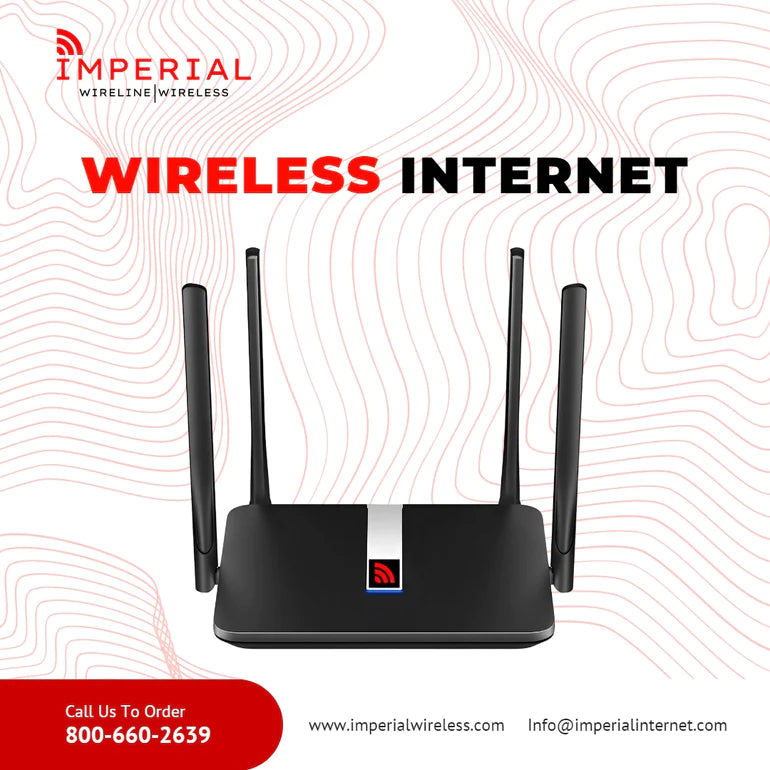The Power of Wireless 5G Internet
Posted by HASSAN JAVAID

Introduction
Without a physical connection, wireless internet allows for the transmission and reception of data between two or more devices. This kind of technology has completely changed how we engage and communicate with one another and how we access information. The various forms of this technology, their advantages and disadvantages, their history, potential future uses, and their effects on people's quality of life, social interactions, and the economy will all be covered in this article.
Comparison
Wireless technology is available in many forms, including Bluetooth, Wi-Fi, cellular networks, and radio frequency identification (RFID). These technologies all offer ways to connect people and objects, but each has advantages and disadvantages. It is a short-range technology that enables communication and data exchange between two or more devices over close distances. Cell phones and other portable electronics like laptops and tablets are the most prevalent places where they are used. The key benefits of this tech are its low cost and simplicity of usage.
Devices can connect to a network and access the World Wide Web via Wi-Fi, a longer-range wireless protocol. It is frequently used in residences, workplaces, and public locations, including hotels, airports, and coffee shops. The main benefit of Imperial Wireless service is quick, dependable connections over considerable distances.
Cellular networks allow for long-distance speech and data transmission. They are primarily utilized in mobile phones and other portable electronics like tablets and laptops. Cellular networks' primary benefit is that they offer coverage in remote locations where different types of communication might not be feasible.
Radio waves are used in radio frequency identification (RFID) to identify and locate objects. It is frequently used in retail establishments, warehouses, and medical facilities to keep track of goods and assets. RFID's primary benefits are its high level of security and ability to locate objects quickly.
Investigating the advantages and disadvantages
Numerous advantages of this technology exist, such as improved mobility, financial savings, and convenience. When using this technology, there are a few disadvantages that should be taken into account.
Benefits
Increased mobility is among the key advantages of Bluetooth technology. These networks do not require physical wires and cables, allowing users to stay connected when on the road. Thanks to this, people may now more easily access the web and other services, such as streaming video, from any location.
Additionally, Bluetooth technology reduces costs. Businesses can dramatically lower their overhead costs by forgoing the requirement for expensive gear and installation fees. They can do this to stay competitive in the market today.
This technology also provides convenience. It is easier for people to stay connected when on the go because of the widespread use of Wi-Fi networks by many devices, including smartphones and tablets. Those who travel regularly may find this extremely helpful.
Drawbacks
This form of communication has many advantages, but some disadvantages must be considered. Security is one of the main issues. Sensitive information can be compromised by using Wi-Fi as a target for hacking and other criminal operations.
Wi-Fi networks may also experience interference from other gadgets. Users may need better speeds and erratic connections as a result. Last but not least, these networks have a constrained range, making it impossible to reach remote regions.
Guglielmo Marconi invented the first cordless telegraph system in the late 19th century when mobile communications became an established field of study. The development of the first radios and televisions in the early 20th century came next. In the 1980s, mobile communication began to take off, and this growth was crucial to the advancement of cellular technology.
Technology advancements in recent years have made it possible for Wi-Fi networks to become quicker and more dependable. Smartphones, tablets, and other wearable gadgets are among the devices that can now connect to these networks.
Examining the Potential of Broadband Technology
New handheld devices are created daily, and the technology behind them is always developing. Future uses include autonomous driving, virtual reality, and smart cities. These programs could completely transform how we work and live by delivering previously unheard-of efficiency and comfort levels.
Broadband networks can now span wider areas thanks to technological advancements. This would enable gadgets to access online resources even in far-off places, enabling users to obtain information and chat with others wherever they are.
Examining how broadband technology affects society
Wi-Fi has a significant social influence. Millions of individuals have benefited from it by accessing information, communicating with others, and staying connected while on the road, which has raised their quality of life.
The impact of communications technology on social life has also been profound. The ability of people to connect in previously impractical ways has aided in the development of stronger communities and interpersonal bonds.
Finally, there has been a sizable economic impact from communications technology. By doing away with the requirement for costly hardware and installation fees, businesses have been able to cut their expenditures dramatically. Because of this, they have been able to compete in the market today and have contributed to creating new employment and possibilities.
Conclusion
The wireless internet has completely transformed the way we engage, communicate with one another, and obtain information. Millions of individuals worldwide have a better quality of life due to it, and businesses have experienced huge economic benefits. These networks will become even quicker and more reliable as technology advances, enabling individuals to stay connected wherever they are.


